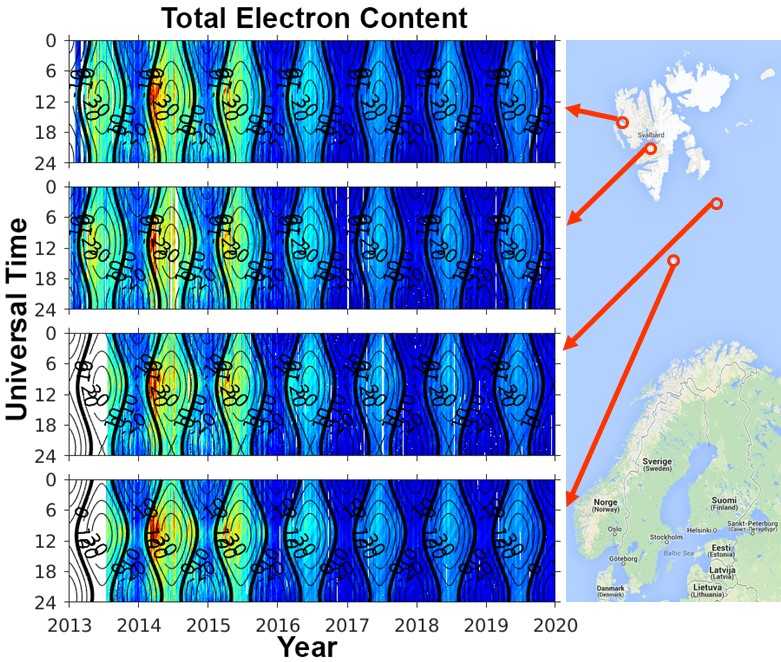

The induction-coil magnetometer project at South Pole is supported by NSF grant OPP-1643700 to New Jersey Institute of Technology. The work at New Jersey Institute of Technology was supported by NSF grants AGS-1547252 and AGS-1602560. MMS work at JHU/APL, UCLA, UNH, and SwRI was supported by NASA contract no. The dedication and expertise of the MMS development and operations teams are greatly appreciated. acknowledges support from NSF grant PLR-1543364. acknowledges support from NSF grant AGS-1654044. acknowledges support from NSF grant PLR-1341677. Research at Augsburg University was supported by NSF grants AGS-1651263 and PLR-1341493.

We thank David Sibeck, Viacheslav Pilipenko, Michael Schulz, Xiangrong Fu, Eun-Hwa Kim, and John Wygant for helpful comments, and we thank Shane Coyle and Dan Weimer for providing corrected AAL-PIP SCM data. Spectrograms from the AAL-PIP array search coil magnetometer PG3 can be accessed at. Spectrograms from the MACCS array magnetometer at Pangnirtung, Canada, can be accessed at. Spectrograms from the MICA search coil magnetometers at South Pole Station, Antarctica and Sondrestromfjord, Greenland can be accessed at. GOES magnetometer data are archived at NOAA's National Centers for Environmental Information (NCEI). Van Allen Probes CDF data files are available at (EMFISIS) and (HOPE).
OMNIWEB SPACECRAFT DATA SOFTWARE
IDL routines for display of MMS data are also publicly available in the current SPEDAS software package, which can be found through the MMS Science Data Center and through the THEMIS TDAS website at. MMS CDF data files are publicly available through the MMS Science Data Center at. We gratefully acknowledge use of NASA/GSFC's Space Physics Data Facility's OMNIWeb, SSCweb, and CDAWeb. Van Allen Probes research at the University of Iowa, University of Minnesota, and Los Alamos National Laboratory was supported by NASA prime contract NAS5-01072 to The Johns Hopkins University Applied Physics Laboratory. The AAL-PIP array is supported by NSF grant PLR-1543364 to Virginia Tech.

The timing of the EMIC waves at both MMS and Van Allen Probe A was consistent with theoretical expectations for EMIC instabilities based on characteristics of the proton distributions observed by instruments on these spacecraft. Transverse EMIC waves also appeared at Van Allen Probe A and GOES 13 very near the times when the magnetic field compression reached their locations, indicating that the compression lowered the instability threshold to allow for EMIC wave generation throughout the outer dayside magnetosphere. He ++ band EMIC waves were observed by MMS inside the magnetosphere, whereas almost all previous studies of He ++ band EMIC waves observed them only in the magnetosheath and magnetopause boundary layers. During the most intense MMS wave burst, which began ~ 1 min after the end of a brief magnetosheath incursion, independent transverse EMIC waves with orthogonal linear polarizations appeared simultaneously at all four spacecraft. Analysis shows several features consistent with current theory, as well as some unexpected features. We present a detailed analysis of EMIC waves observed in the outer dayside magnetosphere by the four Magnetosphere Multiscale (MMS) spacecraft, Van Allen Probe A, and GOES 13 and by four very high latitude ground magnetometer stations in the western hemisphere before, during, and after a modest interplanetary shock on 14 December 2015. The stimulation of electromagnetic ion cyclotron (EMIC) waves by a magnetospheric compression is perhaps the closest thing to a controlled experiment that is currently possible in magnetospheric physics, in that one prominent factor that can increase wave growth acts at a well-defined time.


 0 kommentar(er)
0 kommentar(er)
